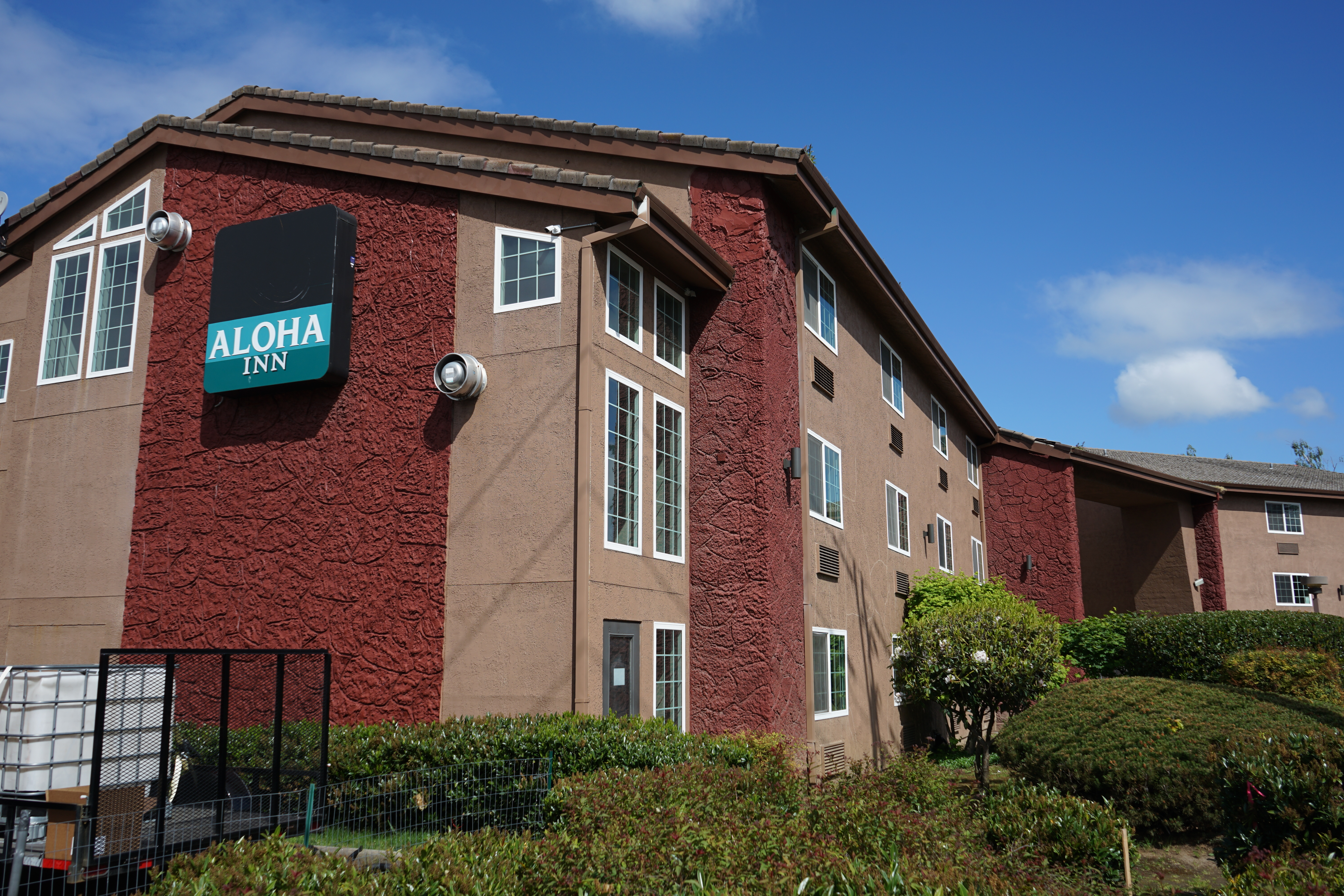
Washington County's first permanent supportive housing development, Aloha Inn, received the bulk of its funding from Metro's housing and homeless initiatives, including the supportive housing services tax.
Courtesy of Metro
The Portland region’s first coordinated supportive housing effort recently wrapped up its first year of services. The effort is funded by a 1% tax on high-income earners that voters in the Portland area approved two years ago. The tax is projected to collect $250 million per year until 2030.
New preliminary data from Metro, the regional government agency, looks at some of the one-year impacts on homelessness and housing from the new tax.
OPB’s Tiffany Camhi spoke with Metro’s regional housing director, Patricia Rojas, about what that money was spent on.
Tiffany Camhi: Metro collected nearly $250 million dollars in the tax’s first year. Some of that money started flowing to homeless and housing organizations in Multnomah, Clackamas and Washington Counties in July 2021. Supportive housing services can mean so many different things. What kind of services did this tax fund in its first year?
Patricia Rojas: What [Metro is] doing is building a comprehensive continuum of care, a comprehensive system that provides a variety of services and interventions that meet people’s individual needs. So that can look like getting somebody into housing. It could look like paying for rent assistance, whether that be short-term or long-term rent assistance. It can be creating a new shelter bed. It could be case management, behavioral health services or employment services. It really is designed to be able to provide any type of support that helps a person exit homelessness and get stable housing.
Camhi: Both Metro and the three counties in the region set goals around things like creating housing vouchers, giving out rental assistance and opening up shelters. Were those goals met?
Rojas: Goals were largely met. And in some cases, goals were exceeded.
For example, there were 9,000 people who were able to avoid homelessness altogether with eviction prevention services from the counties. In this case, the goal was 1,000 people to receive eviction prevention services and 9,000 were served. That’s significant because the best way to end homelessness is to prevent it to begin with.
Over 1,600 people found the safety and stability of housing. And by way of comparison, the 2022 regional point in time count identified [over 6,600] people experiencing homelessness in the Tri-County region. So 1,600 is a significant number of people who have been able to exit homelessness. That number is a little bit shy of our originally projected goal in large part due to having to do with a lot of hiring problems.
Camhi: Right, so funding from this tax helped Washington and Clackamas counties kind of kick-start some of their first ever supportive housing programs. What kind of challenges did they face over this past year?
Rojas: They were kind of starting from scratch. Which was one of the reasons why a regional measure was passed right, we understood and the voters understood that this is a regional issue and we need regional-level resources. So there were some challenges in terms of being able to hire the staff necessary to get started quicker. So it’s really kind of a slower start. But we saw, in the fourth quarter of reporting, a significant ramp-up in outcomes. That indicates that capacity is being built.
Camhi: This supportive housing fund is set to last until 2030. How will data from this first year of funding be used to shape the program over the next eight years?
Rojas: First of all, this data is preliminary. We expect to get refined data in the form of an annual report come October. We will use this type of information to inform program development. We’re going to look at what’s working and what opportunities we have to improve.
Camhi: The nonprofit political group People for Portland abandoned an effort to redirect most of the money from this tax to the creation of emergency homeless shelters. Do you expect to see more battles over this tax money in the future?
Rojas: Well I would hope not. I think people have very strong opinions and one thing we all have in common is that we want people to get into housing and we want to have a compassionate approach to addressing our regional crisis. So while it is very possible for a continued challenge to this work, we know that the best way to address people’s needs is to have a comprehensive approach. It really is not a one size fits all. The data really gives us hope that we are moving in the right direction.



